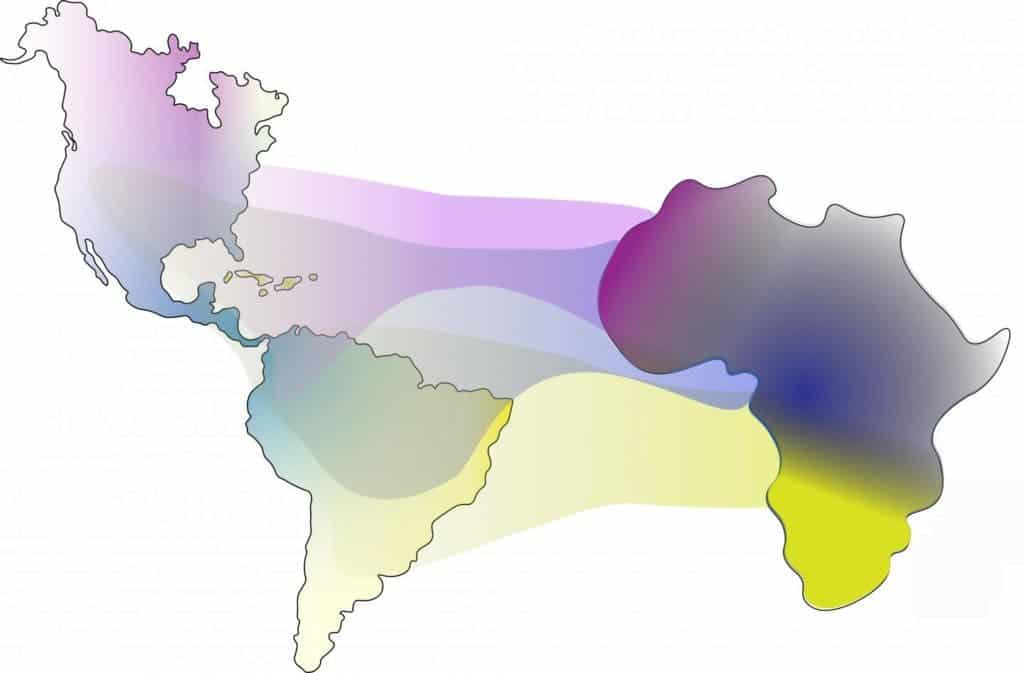
Researchers in Brazil combined historical and genetic data to reveal new insights about the transatlantic slave trade that saw more than 9 million Africans shipped in chains to the Americans from the early 16th century until the mid-19th century. The findings suggest that the African populations imported their genetic diversity and spread their mutations in the Americas through admixture with indigenous and European populations.
“We know in the Americas that the slave trade was a human tragedy, but it is part of our history and identity. This is why my group, but mainly myself and my former PhD student Mateus Gouveia focused in the African Diaspora,” Eduardo Tarazona-Santos, a researcher at the Federal University of Minas Gerais in Brazil and lead author of the new study, told ZME Science.
African populations are the most diverse in the world, genetically speaking. Tarazona worked closely with colleagues in Brazil, Peru, and the United States to assemble what he calls the “largest up-to-date dataset of Americas and African genetic data”, which includes 6,267 individuals with more than 10% African ancestry from 25 populations.
Researchers compared the genetic data with historical demographic data from Slave Voyages database, which tracked and mapped the dispersal of enslaved Africa into the Americas.
“We came out with a mathematical method that makes this comparison compatible. Then we realized that comparing genetic and historical-demography data is something modern geneticists had forgotten to do during the last 10-20 years, but it this kind of comparisons were more common before and have a solid tradition in human population genetics, since the work by Luca Cavalli-Sforza (who passed away in 2018) sixty years ago in the Parma Valley in Italy, where he compared genetic data (from blood groups) with parish record data. So recovering this kind of work, is like making a tribute to Luca Cavalli-Sforza. Reading his books has been an inspiration for many young investigators that in the nineties decided to dedicate to human population genetics, as I did,” Tarazona said.

The researchers found that West Central African ancestry (from countries such as Nigeria and Ghana) is the most common in the Americas. West African ancestry (i.e. Senegal and Gambia) increases going northward while bantu ancestry (from south and southeast Africa) is more significant in the South of Brazil.
Historical records show that the transatlantic slave trade was at its height between 1750 and 1850. The new study found that this period also coincides with the most admixture between imported African populations and locals of European and indigenous ancestry. This timing implies that the 19th century was critical in shaping the structure of the African gene pool in the New World.
“The African Diaspora was so massive (>9 million people), that the genetic diversity observed in the African portions of our admixed genomes is similar to that of African populations of origin of slavery. However, admixture homogenized this diversity (and the mutations responsible for diseases) between the different populations of the African continent,” Tarazona told ZME.
All in all, the study provides unique insights into the gene flow caused by the massive transatlantic slave trade, whose influence is still important in today’s social and cultural setting in the Americas.
“Our results imply that the Africans imported most of their genetic diversity, including the mutations responsible for the diseases, and that admixture has spread these mutations in the Americas along most of the continent. In Africa, they are more compartmentalized geographically. This is important when we interpret data about where there are in the Americas mutations responsible for diseases such as cystic fibrosis and hereditary cancer,” Tarazona concluded.
The findings appeared on March 2 in the journal Molecular Biology and Evolution.





